How Were Microscopes Invented ?
The invention of the microscope is credited to multiple individuals who made significant contributions over time. The earliest known microscope-like device was the "simple microscope" developed by Dutch spectacle makers in the late 16th century. However, the compound microscope, which uses multiple lenses to magnify objects, was developed in the 17th century. One of the pioneers in this field was Dutch scientist Antonie van Leeuwenhoek, who is often considered the father of microbiology. He constructed powerful microscopes with high magnification capabilities and made numerous observations of microorganisms. Another notable figure in the development of microscopes was Robert Hooke, an English scientist who published his observations using a compound microscope in his book "Micrographia" in 1665. These early advancements laid the foundation for the further development and refinement of microscopes, leading to the modern instruments we have today.
1、 Early optical experiments and the discovery of magnification principles.
Microscopes were invented through a combination of early optical experiments and the discovery of magnification principles. The development of the microscope can be traced back to the 16th century when scientists began experimenting with lenses and light.
One of the earliest pioneers in the field was Hans and Zacharias Janssen, a father-son duo from the Netherlands. They are often credited with creating the first compound microscope around 1590. Their microscope consisted of a tube with two lenses that could magnify objects up to nine times. This invention laid the foundation for further advancements in microscopy.
Another significant contributor to the development of microscopes was Antonie van Leeuwenhoek, a Dutch scientist who is often referred to as the "Father of Microbiology." In the late 17th century, Leeuwenhoek designed and built single-lens microscopes that could achieve much higher magnification than the compound microscopes of his time. He used these microscopes to observe and document various microorganisms, revolutionizing our understanding of the microscopic world.
The discovery of magnification principles, such as the relationship between lens curvature and magnification, also played a crucial role in the invention of microscopes. Scientists like Robert Hooke and Isaac Newton made significant contributions to the understanding of optics and the principles of magnification.
In recent years, advancements in technology have led to the development of more sophisticated microscopes. Electron microscopes, for example, use beams of electrons instead of light to magnify objects, allowing for even higher levels of resolution. Additionally, techniques like confocal microscopy and super-resolution microscopy have further enhanced our ability to visualize and study microscopic structures.
In conclusion, the invention of microscopes can be attributed to early optical experiments and the discovery of magnification principles. Over the centuries, scientists and inventors have built upon these foundations, leading to the development of increasingly advanced microscopes that have revolutionized our understanding of the microscopic world.
2、 Development of the first compound microscope by Zacharias Janssen.
The invention of the microscope is attributed to the Dutch spectacle makers, Zacharias Janssen and his father, Hans Janssen, in the late 16th century. They are credited with the development of the first compound microscope, which consisted of two convex lenses that could magnify objects. This breakthrough in optics revolutionized the field of science and opened up a whole new world of exploration.
The Janssen's microscope was a significant advancement from the simple magnifying glasses that were used before. By combining two lenses, they were able to achieve higher magnification and clearer images. This invention allowed scientists to observe and study tiny organisms, cells, and other microscopic structures that were previously invisible to the naked eye.
Since the initial invention, microscopes have undergone numerous improvements and advancements. In the 17th century, Antonie van Leeuwenhoek, a Dutch scientist, further refined the microscope by developing a single-lens microscope with higher magnification capabilities. His microscopes were able to achieve magnifications of up to 300 times, enabling him to make groundbreaking discoveries in the field of microbiology.
In the following centuries, microscopes continued to evolve with the introduction of better lenses, improved illumination techniques, and the development of electron microscopes. Electron microscopes, invented in the 1930s, use a beam of electrons instead of light to magnify objects, allowing for even higher levels of magnification and resolution.
Today, microscopes have become indispensable tools in various scientific disciplines, including biology, medicine, materials science, and nanotechnology. They have enabled scientists to delve into the intricate details of the microscopic world, leading to countless discoveries and advancements in our understanding of the natural world.
In conclusion, the invention of the microscope by Zacharias Janssen and his father was a pivotal moment in the history of science. Their development of the first compound microscope laid the foundation for further advancements in microscopy, ultimately leading to the sophisticated instruments we have today.
3、 Improvements in lens quality and resolution by Antonie van Leeuwenhoek.
Microscopes were invented through a combination of advancements in lens quality and resolution, with Antonie van Leeuwenhoek playing a significant role in their development. Van Leeuwenhoek, a Dutch scientist, is often credited as the father of microbiology and is renowned for his pioneering work in microscopy during the 17th century.
Van Leeuwenhoek was a skilled lens grinder and used his expertise to create high-quality lenses with exceptional resolution. He crafted tiny, spherical lenses that were capable of magnifying objects up to 300 times their original size. These lenses were mounted on a simple brass plate, which allowed for easy manipulation and observation of specimens.
Van Leeuwenhoek's microscopes were single-lens devices, known as simple microscopes, and were primarily used to study biological samples. He made numerous groundbreaking discoveries using his microscopes, including the observation of microorganisms such as bacteria, protozoa, and sperm cells. His meticulous observations and detailed drawings provided valuable insights into the microscopic world.
Since Van Leeuwenhoek's time, microscopes have undergone significant advancements. The development of compound microscopes, which utilize multiple lenses to provide higher magnification and resolution, revolutionized the field of microscopy. Additionally, improvements in lens manufacturing techniques and the introduction of new materials have further enhanced the quality and clarity of microscope lenses.
In recent years, there have been remarkable advancements in microscopy technology. Techniques such as confocal microscopy, electron microscopy, and super-resolution microscopy have allowed scientists to visualize structures at the nanoscale level. These cutting-edge techniques have opened up new avenues of research and have contributed to breakthroughs in various scientific disciplines, including biology, medicine, and materials science.
In conclusion, the invention of microscopes can be attributed to improvements in lens quality and resolution, with Antonie van Leeuwenhoek's contributions being particularly significant. From his early single-lens microscopes to the modern-day advanced microscopy techniques, the field of microscopy has continuously evolved, enabling scientists to explore and understand the intricate world of the microscopic.
4、 Advancements in microscope design and the introduction of achromatic lenses.
Microscopes have played a crucial role in scientific discoveries and advancements throughout history. The invention of microscopes can be attributed to a combination of advancements in microscope design and the introduction of achromatic lenses.
The earliest microscopes were simple magnifying glasses that were used to observe small objects. However, it was not until the 17th century that the first compound microscope was developed. Dutch scientist Antonie van Leeuwenhoek is often credited with inventing the microscope. He crafted his own lenses and used them to observe a variety of specimens, including bacteria and blood cells. Although his microscopes were relatively simple, they laid the foundation for future developments.
Advancements in microscope design occurred in the 19th century when scientists began to experiment with different lens configurations. One significant breakthrough was the introduction of achromatic lenses. Achromatic lenses are designed to correct for chromatic aberration, which is the distortion of colors that occurs when light passes through a lens. By reducing this distortion, achromatic lenses allowed for clearer and more accurate observations under the microscope.
In recent years, there have been further advancements in microscope technology. One notable development is the introduction of electron microscopes, which use a beam of electrons instead of light to magnify specimens. Electron microscopes have significantly higher magnification capabilities and can provide detailed images of structures at the atomic level. Additionally, there have been advancements in fluorescence microscopy, which allows scientists to label specific molecules or structures with fluorescent markers for easier visualization.
Overall, the invention and evolution of microscopes have been driven by a combination of advancements in design and lens technology. From the simple magnifying glasses of the past to the sophisticated electron microscopes of today, microscopes continue to be indispensable tools in scientific research and discovery.










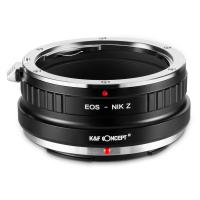




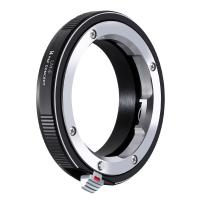
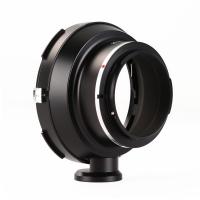



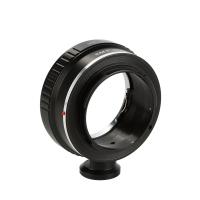



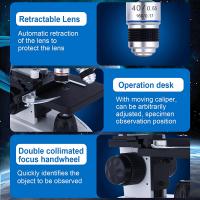





There are no comments for this blog.